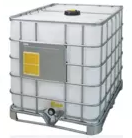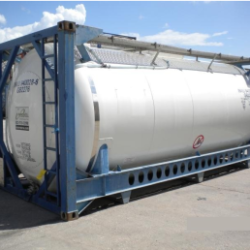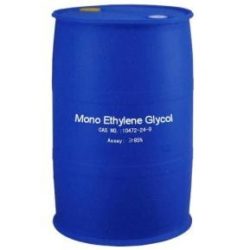Description
Flash point -55°F. Less dense than water and very slightly soluble in water. Vapors are heavier than air. Vapors may irritate nose and throat. May be toxic if swallowed, by inhalation or by contact. Added to natural gas as an odorant. Used as a stabilizer for adhesives.
Ethyl mercaptan is used as an intermediate and starting material in the manufacture of plastics, insecticides, and antioxidants, and as an odorant to serve as a warning property for natural gas.
Ethyl mercaptan is an odorous, colorless liquid. The disagreeable odor has been described as penetrating, persistent, and garlic- or leek-like, similar to decaying cabbage. It is found in illuminating gas, in “sour” gas in West Texas oil fields, and in petroleum distillates from which it may be separated by chemical or physical methods. . It is used as an intermediate and starting material in the manufacture of plastics, insecticides, and antioxidants, and as an odorant to serve as a warning property for natural gas.
Ethyl mercaptan is produced commercially by the reaction of sodium ethyl sulfate with potassium hydrosulfide, or catalytically from ethanol and hydrogen sulfide. The total production of methane, ethane, propane, butane, octane, nonane, decane, hexadecane, and miscellaneous thiols was 264,797,000 pounds in 1976, and an estimated 23,130 U.S. workers were exposed to ethyl mercaptan from 1972–1974.
The physical and chemical properties of ethyl mercaptan are presented in Table below. Because of its relatively high vapor pressure (442 mm Hg at 20ºC), ethyl mercaptan has the potential to generate toxic air concentrations very quickly in the event of a spill.
Ethyl mercaptan depresses the central nervous system and affects the respiratory center, similar to hydrogen sulfide, producing death by respiratory paralysis. Clinical signs of exposure are ocular and mucous membrane irritation, headache, dizziness, staggering gait, nausea, and vomiting. Paralysis of locomotor muscles has also been observed. Its primary mechanism of action appears to be interference with cytochrome oxidase.
|
Parameter |
Value |
|
Synonyms |
Ethanethiol; ethyl sulfhydrate; ethylthioalcohol thioethanol; thioethyl alcohol; mercaptoethane |
|
CAS registry no. |
75-08-1 |
|
Chemical formula |
C2H5SH |
|
Molecular Formula |
C2H5SH or C2H6S |
|
Molecular weight |
62.14 |
|
Physical state |
Colorless liquid |
|
Odor |
Garlic-, leek-, or skunk-like |
|
Melting point |
-147.8°C |
|
Boiling point |
35.1°C |
|
Flash point |
-48.3°C (closed cup) |
|
Density/Specific gravity |
0.8315 at 25°C |
|
Solubility |
15,603 mg/L at 25°C in water, soluble in acetone, dilute alkali, alcohol, ether, and petroleum naphtha |
|
Saturated vapor concentration (neat) |
7.0 × 105 ppm (1.8 × 106 mg/m3) at 25°C |
|
Vapor pressure |
442 mm Hg at 20°C |
|
Incompatibility |
Strong oxidizers |
|
Conversion factors in air |
1 mg/m3 = 0.39 ppm |
|
|
1 ppm = 2.54 mg/m3 |
Use
|
Category |
Category Description |
|
Agricultural |
Relating to agricultural, including the raising and farming of animals and growing of crops |
|
Agricultural, consumer_use |
Term applied when the only information the source indicates is ‘consumer’ or ‘consumer product’ ; also applied to terms that the source indicates are f |
|
Appliance, heating, lawn_garden |
Products used outside the home (includes outdoor toys such as sandboxes, canopies and shelters, garden statues, outdoor lighting and seating, outdoor power equipment, etc |
|
Consumer_use |
Term applied when the only information the source indicates is ‘consumer’ or ‘consumer product’ ; also applied to terms that the source indicates are f |
|
Food_additive |
Includes spices, extracts, colorings, flavors, etc added to food for human consumption |
|
Food_additive, flavor |
General flavoring agents used in foods, including condiments and seasonings |
|
Fragrance |
Fragrances or odor agents, can be used in home products (cleaners, laundry products, air fresheners) or similar industrial products; usage indicated when known; more specific modifiers included when known |
|
Fuel |
General fuels, fuel additives, motor/automotive fuels |
|
Fuel, automotive |
Generally related to automobiles or their manufacture, used when automotive_care or automotive_component are not applicable (e.g. auto fuel, GPS units), or detailed information is not known |
|
Fuel, heating |
Related to heating, such as heating systems, heating fuels, fireplaces, furnaces, radiators, boilers, etc |
|
Heating, fire, lawn_garden |
Products used outside the home (includes outdoor toys such as sandboxes, canopies and shelters, garden statues, outdoor lighting and seating, outdoor power equipment, etc |
|
Manufacturing, agrochemical |
Agricultural chemicals used on a variety of crops |
|
Manufacturing, chemical |
General term used only when the only information known from the source is ‘chemical,’ typically related to manufacturing of chemicals, or laboratory chemicals |
|
Manufacturing, fertilizer |
Fertilizer for consumer or industrial use, and manufacturing of fertilizers |
|
Manufacturing, pesticide |
Substances used for preventing, destroying or mitigating pests |
|
Pesticide |
Substances used for preventing, destroying or mitigating pests |
|
Resource_extraction, gas |
Related to fracking, natural gas, industrial gases |
|
Resource_extraction, oil |
Crude oil, crude petroleum, refined oil products, fuel oils, drilling oils |
|
Tools, consumer_use |
Term applied when the only information the source indicates is ‘consumer’ or ‘consumer product’ ; also applied to terms that the source indicates are for consumer use, yet the descriptor term is ambivalent about usage (e.g., cleaning_washing products may be for industrial or consumer use, when the source indicates consumer use, the consumer_use term is also applied) – see appendix for full list of unambiguous consumer related terms plus ambiguous consumer related terms which if indicated are labeled with ‘consumer_use’ |









Reviews
There are no reviews yet.